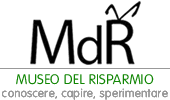
From theory to practice: how much we really know about finance
Being financially literate means being able to use financial products and services in an informed manner and understanding the meaning of concepts such as diversification, risk, interest rates, inflation and the value of savings, debt and investments.
These terms appear on social media, on money management, online payment and investment apps, in articles that recommend saving and planning methods. Knowing how to manage your finances in the short and long term, knowing the meaning of these words, is now essential to building your autonomy and being able to look to the future with greater tranquility.
But why, even if we hear so much about it, do the data from the last ten years confirm that, in terms of financial awareness, Italy remains behind other countries?
Digital tools have facilitated access to the execution of financial operations: think of the applications with which to access bank services, plan holidays, create a saving habit, or how, with just one click, you can invest and move sums of money.
A greater diffusion of digital financial tools, evidently, does not imply greater financial literacy.
Compared to previous data, in 2023 there is an improvement in behaviors and attitudes, but the level of basic financial knowledge has decreased. This is what is highlighted by the Survey on financial literacy and digital finance skills in Italy among adults, promoted by the Bank of Italy in 2023, which examines knowledge, behaviors and attitudes in the field of financial literacy of a representative sample of 5000 people.
How important are the right words in financial education
The question is whether enough is being done to spread financial culture, whether the initiatives already in place, at a public and private level, are going in the right direction, whether they really take into account their interlocutors, their needs and the context from which they come.
For example, the gender gap in the level of financial literacy is still strong, being much lower for women. Geographical distribution is also crucial, especially for people coming from Central and Southern Italy, who show less knowledge in the financial field. This means that, for many, it is not easy to answer, for example, questions such as “what is inflation?”, “what is the interest rate?”, “what is an investment?”.
If the question were asked differently, using different words or, to be more precise, a different wording, would it be better understood? Would there be a correct answer?
The Museum of Saving wanted to answer these questions with the Measuring financial education survey, where the questions to assess the level of financial literacy were asked in both the standard and alternative formulations.
Using a different wording, for 2 out of 4 questions the alternative version collects a greater number of correct answers than the standard one.
The alternative formulation also mitigates the gender gap in financial literacy, although it remains significantly important. Being a woman, resident in the Center and South, and with a qualification lower than a degree, greatly reduces the probability of having adequate financial knowledge, as reported in the working paper by the director of the Museum, Giovanna Paladino, Does the question wording matter? A study of the framing effect on financial literacy in Italy.
Understanding how to talk about money with a man, a woman or a child and what the right words are to explain complicated and sometimes not very engaging concepts is, therefore, certainly a point to seriously question. However, the way the question is asked is not sufficient to explain why the level of financial literacy in Italy is still so low. The challenge, therefore, remains that of intervening in schools with financial education initiatives.
Financial literacy starts at school
In addition to teaching how to make more informed decisions, financial literacy is a tool to protect yourself from risks and scams. Knowing how to save and invest makes us less vulnerable to unexpected events, more prepared for irrational or emotional behavior or attempts at deception. In a world where everything changes quickly, possessing this knowledge has become indispensable.
This is why it is urgent to promote financial education from a young age, starting from school.
Over the years, there have been numerous initiatives organized by the Museum of Saving to bring financial education into the classrooms, with activities and workshops for primary schools and for middle schools and high schools. There are many projects and workshops dedicated to students on the topics of saving and sustainability.
Among these, the financial education project that tested the classes and the creativity of the new generations was the SAVE Ambassador challenge. The initiative, also recognized as PCTO, involved various classes throughout the year, challenging them to win the title of “sustainability ambassador” through online lessons, gaming apps, research work and quizzes.
In the new year there will be many initiatives to introduce students to the basic notions of financial education. Discovering the history of money, listening to the words of finance and learning to give the right value to economic and environmental resources are just some of the activities carried out in the PCTO courses, in the laboratories, in the webinars and in the events that will also be offered during the school year which is about to begin. The Museum of Saving already has many financial education projects planned for schools of different levels. On the website it is possible to take a look at some initiatives among the PCTO projects and the new educational offer.
September 13, 2023
